Introduction.
The Spanish Civil War formally ended on April 1, 1939, however the armed clashes did not completely cease on that date. Despite the enormous inequality of the forces involved –Francoist Army, Civil Guard and National Police on the one hand and a few thousand republican combatants on the other– the clashes continued for around another decade. These were, obviously, small-scale battles, skirmishes, ambushes, ephemeral seizures of small towns... actions without the ability to change the course of events but which showed the persistence of opposition to the regime and a continuation of the civil conflict.
The guerrilla was the usual form of struggle in these years. The word maquis, of French origin, has also served to designate the phenomenon. All the republican fighters of this period were guerrillas; The aforementioned difference in forces only indicated the existence of an asymmetric clash and when this occurs, the weaker side resorts to this form of confrontation. But guerrilla and civil war are not different events, they are closely linked and the first cannot be understood without the second.
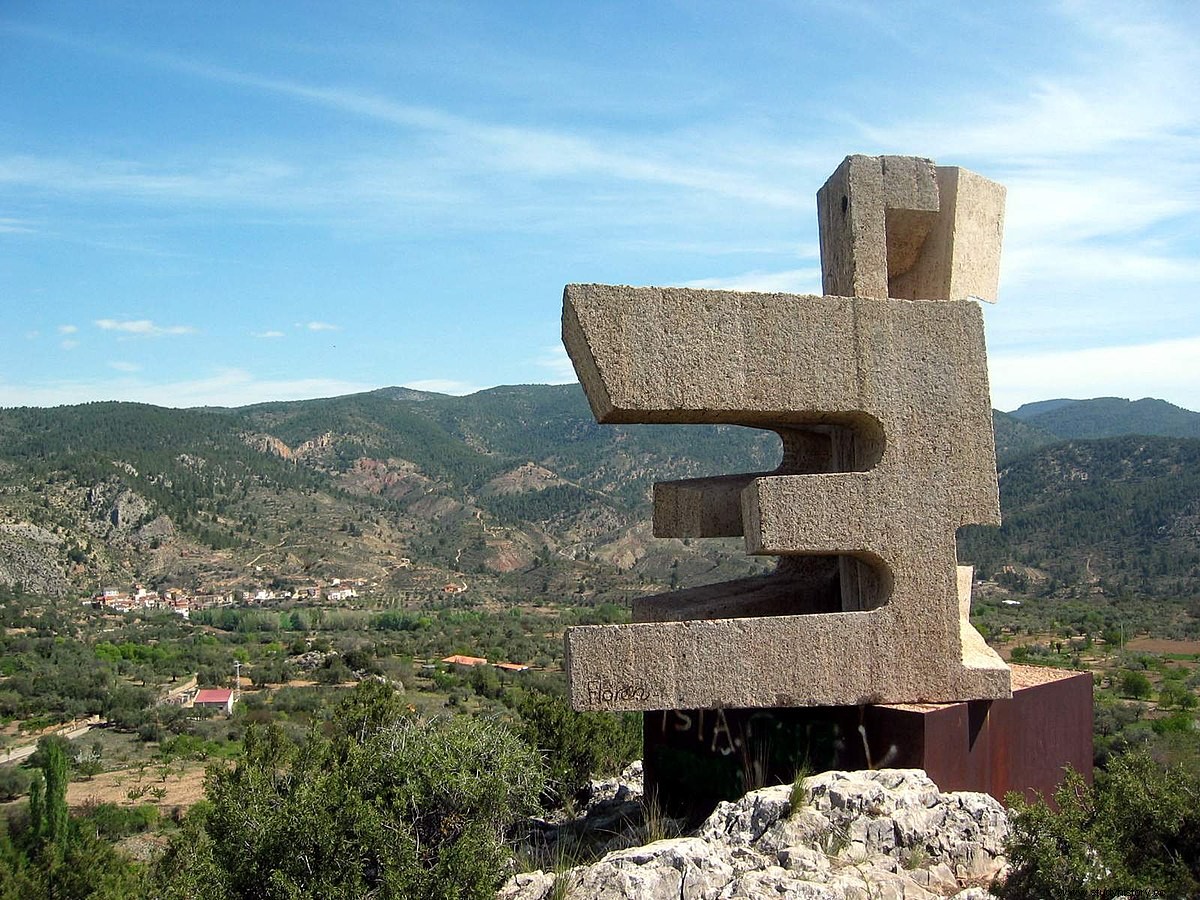
The dates that delimit the phenomenon studied vary a bit depending on the sources, but choosing the broadest ones it is possible to affirm that the phenomenon of the republican guerrillas appeared in 1939, although for other historians it did so in 1944, and lasted until 1952 in rural areas , extending punctually until 1963 in the cities, where it moved when it became clear that its social and political impact would be very limited if the struggle did not leave the rural world. The peak period of its actions was between 1945 and 1949. This increase in its activity coincided with the years in which the Franco regime was going through its worst moments, both due to internal difficulties –hunger, rationing, lack of economic resources,…– as external –international isolation and possible Allied invasion of Spain due to its links with the Axis.
The emergence.
Already during the war, in various mountainous areas, there had been fighting between the Republican troops, who acted as guerrillas, and Franco's army. For this reason, when the open conflict ended, several thousand republican soldiers remained, in more abrupt and scattered areas of the peninsula, who did not accept the surrender either for fear of possible reprisals or because they thought they should continue fighting against fascism. They were soon joined by a large number of escapees, men and women, who escaped to avoid being shot, tortured or imprisoned. These escapees joined the guerrillas as a way of surviving the Francoist threat.
These guerrilla structures had a precedent already during the development of the war. The republican government created the XIV Army Corps in 1937. Formed by guerrillas, in reality what we would today call special operations forces, they acted in the enemy rear with the aim of creating insecurity, hindering supplies or distracting troops from the main scenes of war. Once the conflict ended, many of these soldiers continued to act the same, now converted into guerrillas.
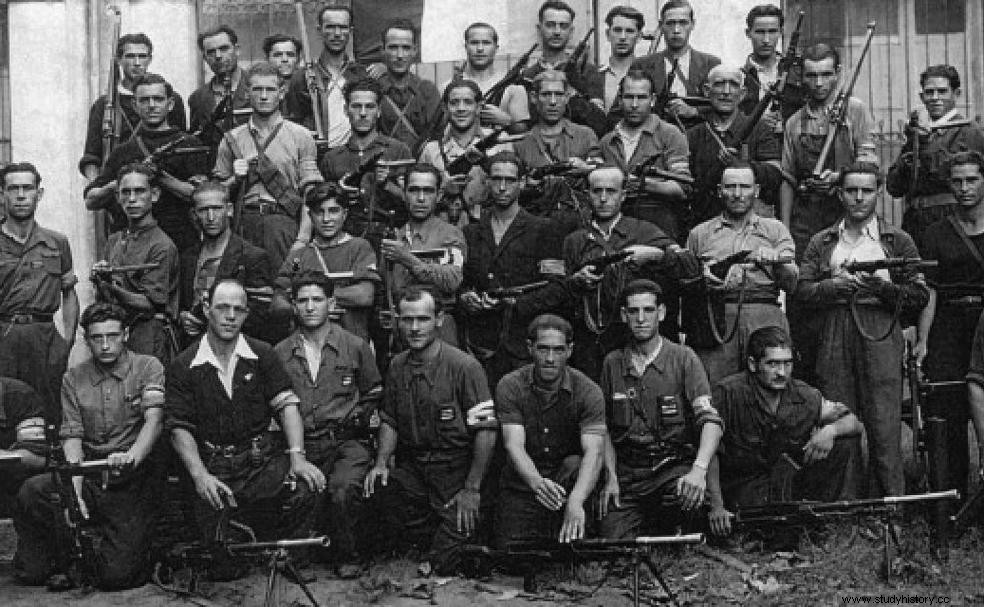
In this way, pockets of resistance began to develop in various places on the peninsula where the previously dispersed guerrillas were concentrated (see map). Thus, the so-called Guerrilla Groups were formed, more or less isolated geographically, but, as we will see later, almost all of them linked to the Communist Party of Spain, its main promoter together with some libertarian groups.
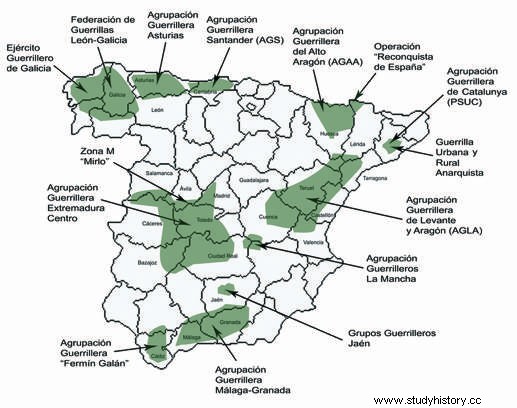
The main purpose of maintaining the guerrilla was its possible coordination with a virtual invasion of Spain by the victors in World War II. However, that hope was already frustrated in 1946 with the so-called «Tripartite Declaration», a document signed by Great Britain, the United States and France, which condemned the Franco dictatorship and supported a democratic solution, but denying a return to the regime of the Republic. In the same way, they chose to totally rule out the use of violence. With this, the guerrilla was condemned to extinction, since it was evident that, by itself, it could never end the dictatorship.
On the other hand, within the framework of Spanish politics, the predominance of the PCE and its hegemony in the guerrilla groups was viewed with suspicion by the rest of the political forces. His calls for unity never came to fruition as the party was always supposed to simply follow the interests of the USSR. That refusal to get involved in the guerrilla struggle of the remaining forces made it easier for the PCE to assume both the leadership of the Groups and their political defense. This position was maintained until 1948, the date on which, already within the framework of the Cold War and the isolation of the party by the Spanish democratic political forces, it renounced the armed struggle against Francoism and opted for infiltrating the civil organizations of the regime. It can be said, therefore, that after 1948 the republican guerrillas lacked expectations.
Historiography has highlighted at least two phases in the anti-Francoist armed resistance:the first, called fleeing, characterized by the formation of small disorganized parties, and whose motivations were more linked to fleeing from repression and achieving survival than to political approaches.; and a second phase from 1944-45, in which the PCE tried to organize the small dispersed groups to give them political references and military structures.
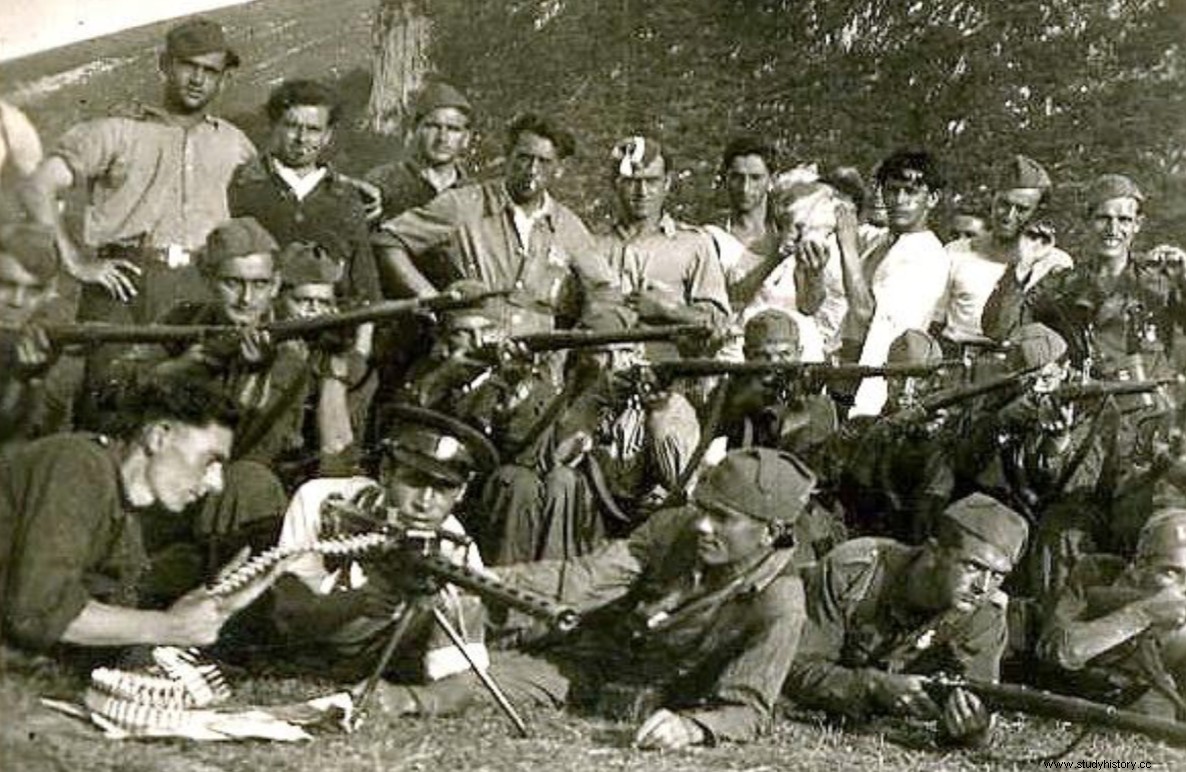
A separate mention must be made of his most notorious event –already discussed in another entry on this same blog:The invasion of the Arán Valley– the failed invasion of the Arán Valley (October 1944). The republican troops that acted in this event came from France, many of them hardened in the fight of the French Resistance (the maquis) against the Nazis. This action, promoted mainly by the PCE, opened the door for this party to take control of the Associations, a control that it would maintain at least until 1948.
The role of women in the guerrilla is still an aspect that requires more research, although their participation in it is beyond any doubt. They did not usually get involved in the combats because the PCE considered that they should mainly carry out liaison and collaboration tasks. Tasks that were basic for the support of the groups and equally dangerous. One example was the indictment of 818 women accused of collaborating with the northwestern guerrilla.
An example of Grouping:the AGLA.
Of the various groups that emerged, we are going to analyze, as an example, the Levante and Aragón Guerrilla Group (AGLA), the most powerful between 1946 and 1952, although with ups and downs in its activity. Fernanda Romeu has analyzed in depth the evolution and vicissitudes of this guerrilla group.
Its origins can be found in the nuclei of resistance that arose in the northwestern mountainous area of the Valencian Community, Teruel and Cuenca. A territory conducive to the development of guerrilla activities and which, moreover, was relatively close to the French border. The AGLA differed in its creation from other Groups in that it arose without the existence of a previous base of escapees, but was created after the arrival from France (1946) of communist troops sent with the purpose of activating it. For this reason, the Association was the closest to the PCE and also the one that was most controlled by the party apparatus.
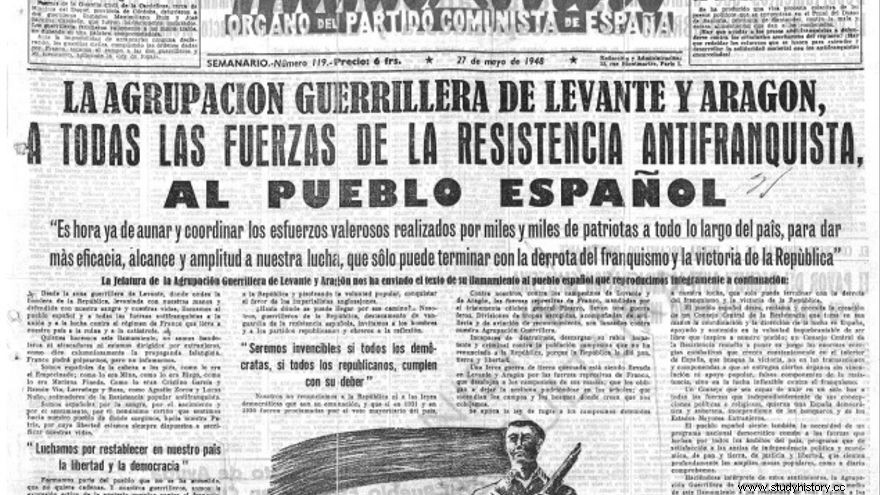
It was a tightly managed organization and was capable of executing simultaneous actions and quickly withdrawing. However, despite the notoriety of some of her attacks –for example, the assault on a pay train in July 1946–, the little media importance of her attacks, carried out in a sparsely populated rural environment and whose dissemination was cut off by the prevailing censorship in all media.
The guerrilla actions of the AGLA, which were also typical of all the Groups, were mainly aimed at covering four objectives:
- The propaganda. The exhibition of banners, flags, leaflets that gave visibility to their struggle was frequent in their actions.
- The economic blows. Robberies, assault on banks, shops, farmhouses, even the aforementioned assault on the pay train. Their goal was to raise resources.
- The punitive actions –kidnappings, executions, beatings…– Carried out to instill fear or retaliation.
- Sabotage actions. Cuts of railway tracks, highways, train derailments, blowing up of bridges, electrical installations, etc.
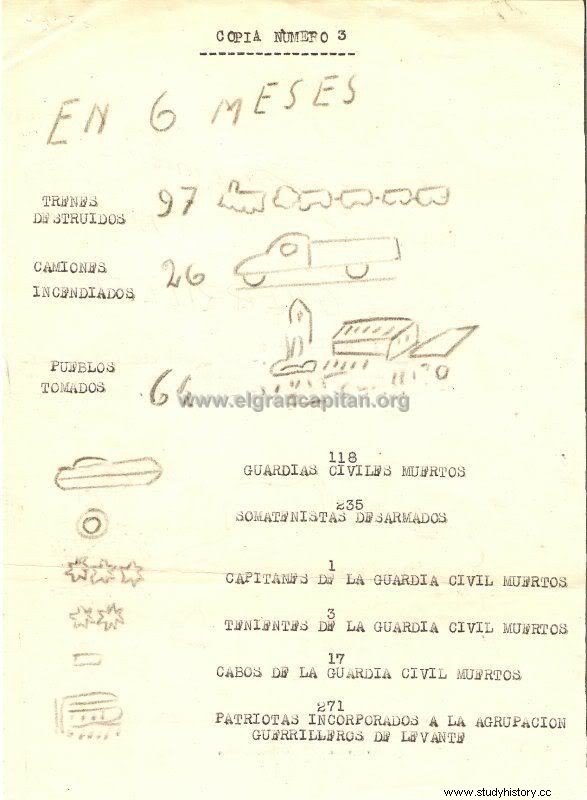
As of 1948 and due to the change in the policy carried out by the PCE, the Association was reducing its actions and losing troops. Some guerrillas fell into mere crime, others retired on their own or were evacuated to France. Many felt abandoned by the communist leadership.
Conclusions.
The guerrilla groups caused the political and military wear of the Franco regime, although they were unable to defeat the Franco regime through armed struggle. His mere presence also broke the triumphalism of official propaganda. Apart from denying the idea of an idyllic peace after the civil war, the Francoist governments had to dedicate quite a few forces, mainly from the Civil Guard, but also from the Army and even the National Police for its containment and repression.
We must not forget that the guerrilla, apart from its military component, was a political project over which the same division that was already evident at the end of the civil war between the republican political forces hovered. On the one hand, the sectors in favor of the uncompromising resistance –socialist followers of Negrín, communists and some republicans–, on the other the sectors in favor of an agreed end –socialists, anarchists, Basque and Catalan nationalists and President Azaña himself–. From this perspective, it is understandable that the PCE was the force that most supported the guerrilla groups.
The existence of the guerrilla has been criticized as a tactical error based on a distorted political analysis. This is, of course, an a posteriori analysis. But it is forgotten that its appearance was an initiative consistent with the historical situation and with the anti-fascist resistance movement that spread throughout Europe in those years – France, Ukraine, Italy, the Balkans, …
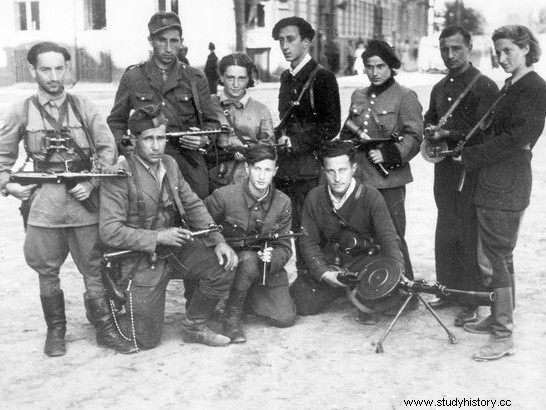
The anti-Franco guerrilla was a direct consequence of a political fact:the implantation of a military dictatorship with fascist features in Spain. It was not a revolt carried out by peasants, with primitive and utopian features. Nor did its creation respond to a particular desire of Stalin. The guerrillas never proposed the creation of an exclusively communist republic, but instead their political project was the restoration of the democratic Republic annulled in 1939 – a project that inspired the PCE's National Union policy between 1943 and 1947.
Bibliography.
Arasa, D. (1984). The 40s:the maquis and the PCE . Barcelona:Argos Vergara.
Arostegui, J. (2008). The last front. The armed anti-Franco resistance in Spain, 1939-1952 . Madrid:Books of the Waterfall.
Left, J.M. (2002). Maquis:Anti-Franco Guerrilla. A theme in the literature of Spanish memory. Romansk Forum, 16 .
Romeu Alfaro, F. (2002). Beyond utopia:Levante Guerrilla Group . Cuenca:University of Castilla La Mancha.
Rodríguez, A. (et.al.) (2020) Dossier Maquis. Guerrillas against Franco. The Adventure of History, 260.
Serrano, S. (2002). Maquis. History of the anti-Franco guerrilla . Barcelona:Booket.
Vidal Castaño, J.A. (2016). The Spain of the maquis (1936-1965) . Madrid:Point of View.
Maquis:the last guerrillas | TO BE History | String BE
The maquis, between Francoist harassment and internal conflicts (eldiario.es)
https://www.rtve.es/alacarta/videos/la-memoria-recobrada/memoria-recobrada-del-monte/3880657/
